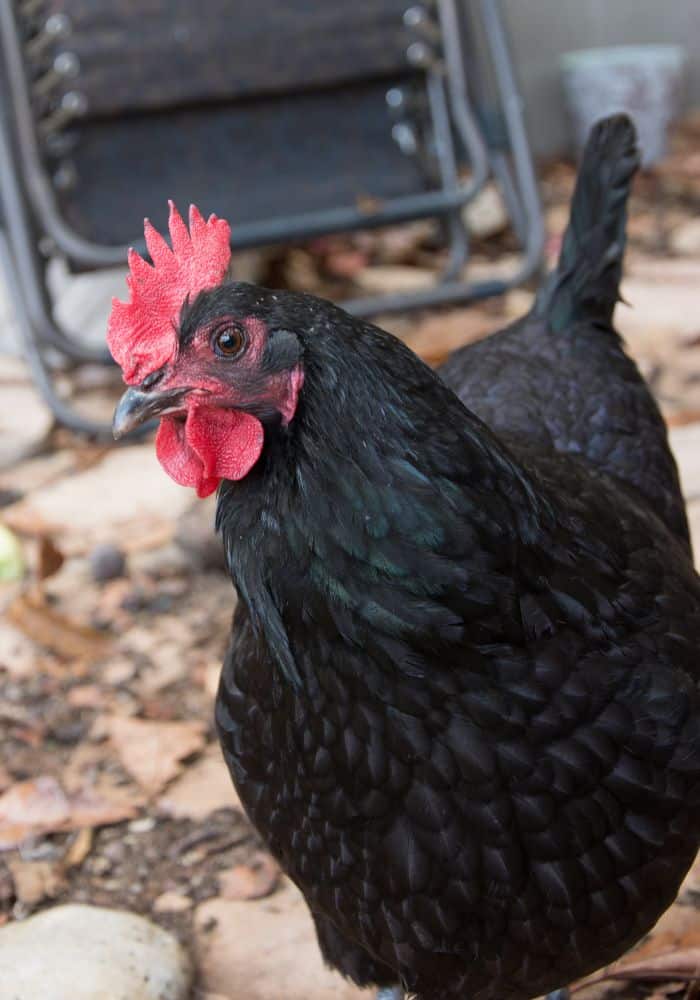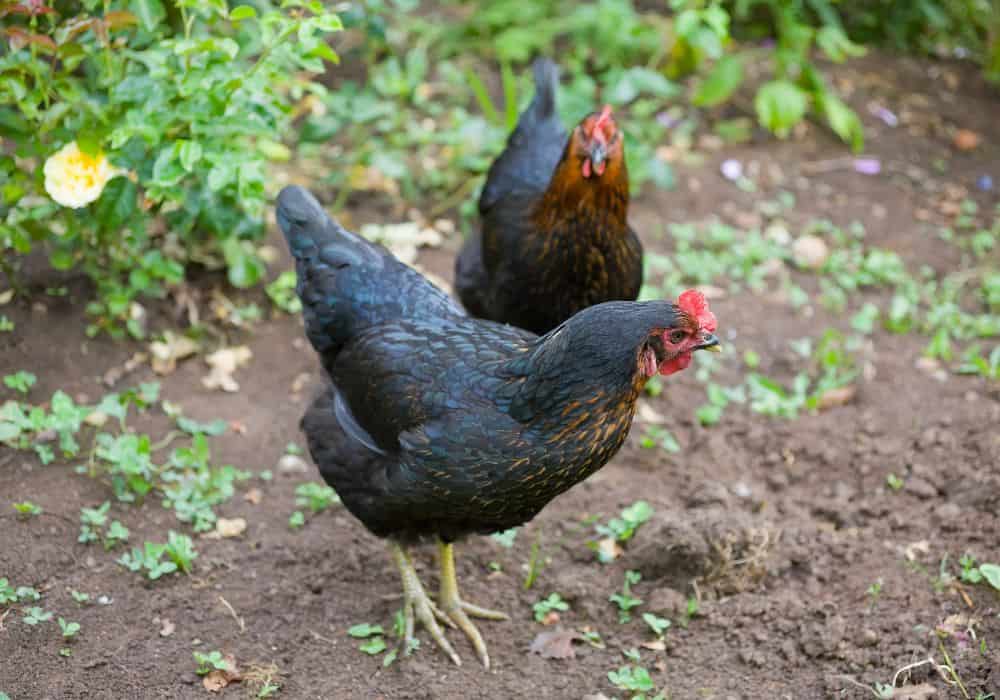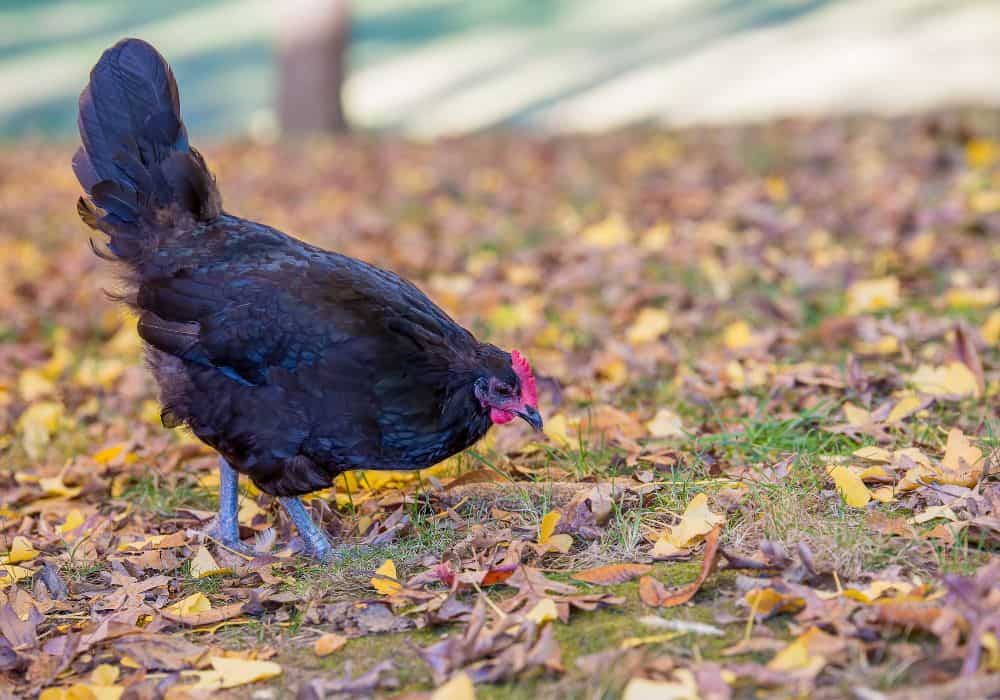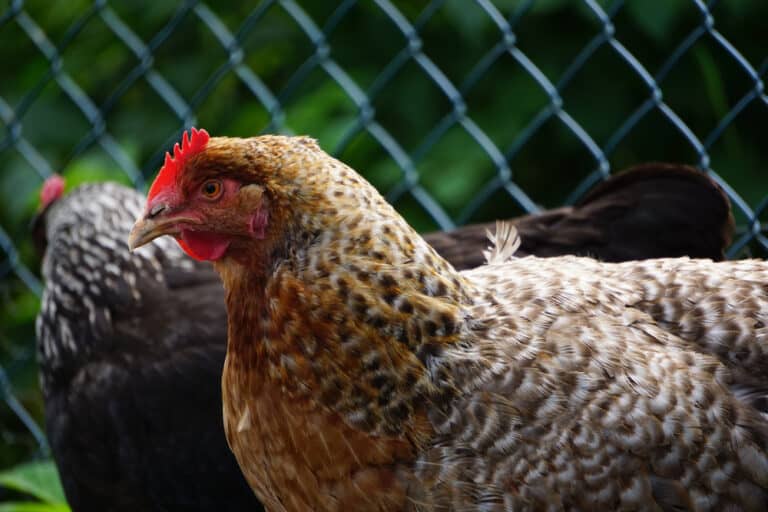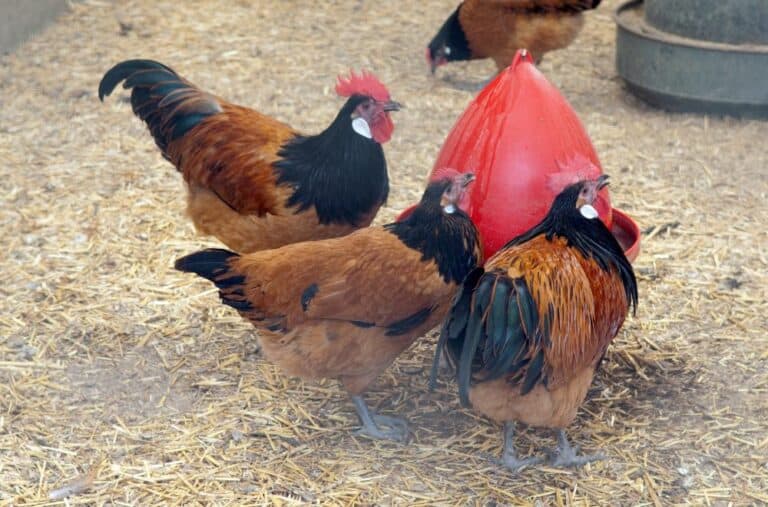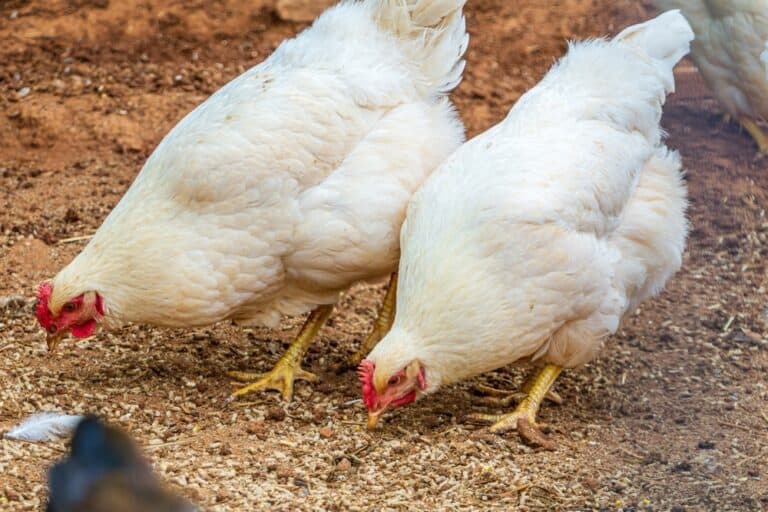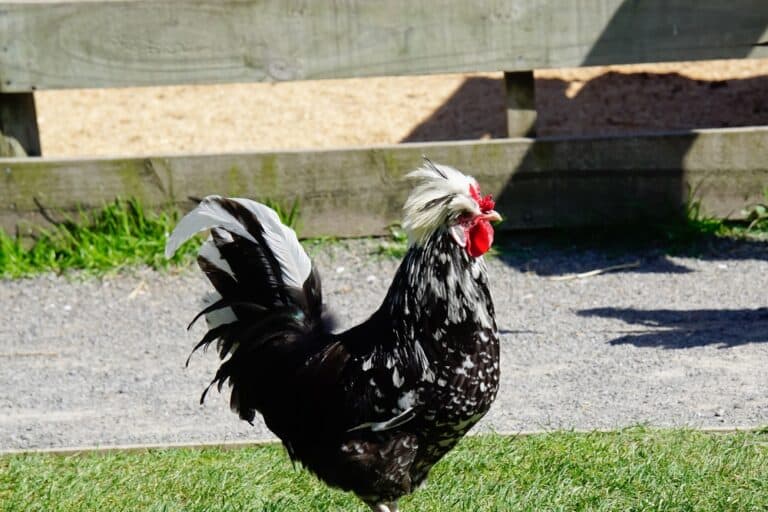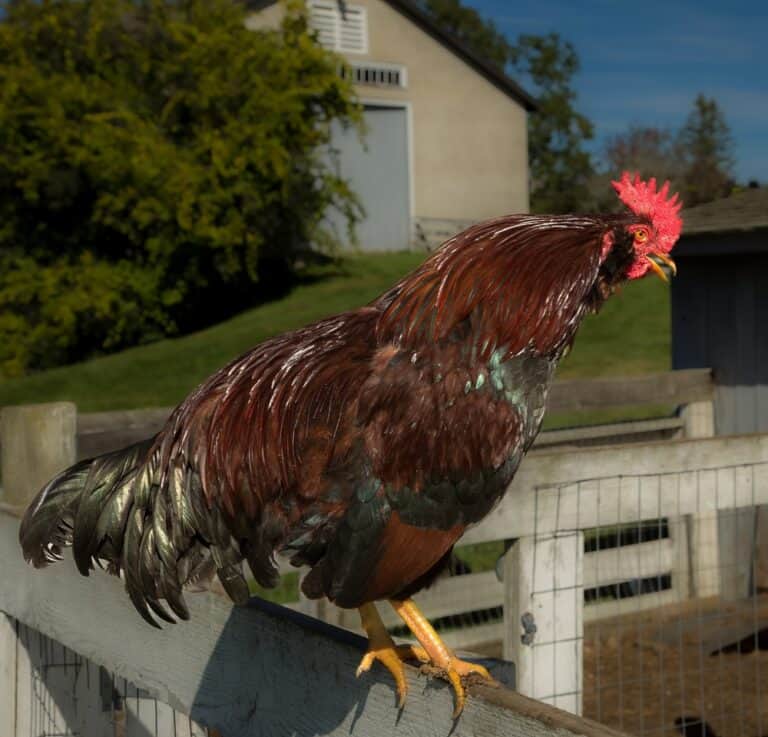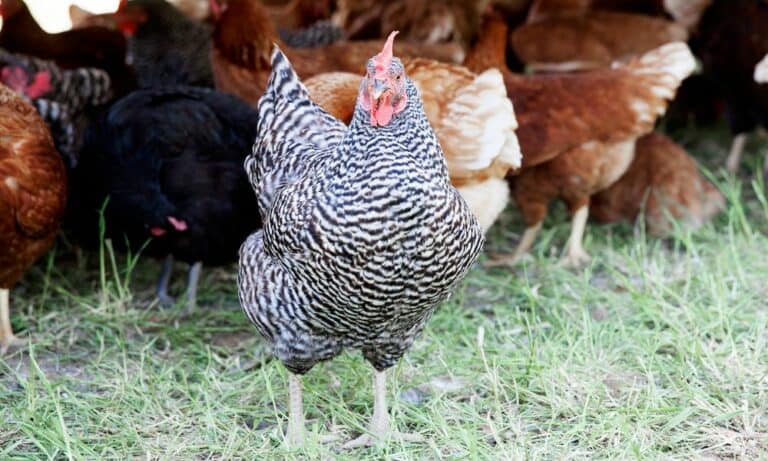Are you thinking of getting Australorp chickens? This chicken breed, with a name contracted of Australian black Orpington, has wowed chicken keepers with its ability to lay over five eggs per week. But while that may sound good, there are more than just egg-laying abilities you need to consider. Will the bird’s personality be right for you and your chicken coop?
If you are looking to find out what the Australops are like, you have found the right article. We will explore the breed’s history, temperament, appearance, and coop setup so that by the end of the article, you will have a better understanding of what the breed is like.
Where Did Australorps Come From?
As the name suggests, parts of the Australorp’s roots are in Australia. In the early 1900s, Orpingtons were taken from the UK to Australia where chicken keepers began to breed them with several other breeds to improve their egg-laying ability, including Rhode Island Reds, White Leghorns, Minorcas, and Langshans. Some people say Plymouth Rocks were also used.
The result was that the Australorps were much better at laying eggs than the Orpingtons and the new breed was able to beat all others in egg-laying competitions. The current record is 364 eggs within 365 days, which is an incredible achievement, especially without any extra lighting to induce egg laying.
In the 1940s, the interest in Australorps waned after they had been bred with White Leghorn, and the Austra White, which was even more productive, was created. For several years, the numbers of Australorps were declining, but this has been reversed in recent years and the breed is now classed as a recovering breed.
What are the Australorps Like?
The Australorps, which are also known as Australs or Australian Orpingtons, can appear shy at first. However, once they get to know you, they will become extremely friendly. They like interacting with people and spending time with you.
When the Australorps have become familiar with you and are comfortable around you, you will soon notice this curious and intelligent bird coming to check what you are doing. They probably also have an ulterior motive: to see if you have a treat for them.
In mixed flocks, especially if you are introducing Australorps to an existing flock, you need to keep a close eye on them. Despite their size, they are often near the bottom of the pecking order and get picked on if you have bullies in your chicken coop. This is because they are gentle and docile and try to avoid trouble.
Are Australorps Good Around Children?
Australorps are great chickens to keep if you have children. They do not mind being held and petted, which makes them safer around children. However, you shouldn’t expect them to become lap chickens.
You also need to exercise more caution with roosters. Even though they are not known to be aggressive, they can get protective of their hens, especially during the mating and breeding season.
What Does Australorp Look Like?
The Australorps are a standard-size chicken breed but can look more intimidating because of their upright carriage. The Australorps have black feathers that can shine iridescent green in the sunlight.
They have a single comb, which is upright and has seven points. Their beaks are dark and earlobes and wattles are red. Australorps have yellow legs, which should be clean of feathers. They have white soles of feet. However, some hatchery-bred Australorps can have willow-colored legs. This does not affect them in any way, except that you cannot show them.
The body of an Australorp is solid and rectangular. The back is dipped slightly before rising at the tail, which they hold at a 45-degree angle. Adult hens weigh 6.6 to 8 lbs and roosters 8.5 to 10 lbs. The Bantam Australorps are smaller. The females only weigh 1.7 to 2.2 lbs and the males 2 to 2.7 lbs.
How to Tell Male and Female Chicks Apart?
There are some breeds where the male and female chicks have different appearances but with Australorps all chicks look the same. That means it is very hard to tell the difference between the sexes. Some breeders that are very familiar with the breed may be able to tell them apart from their behavior but most of us will have to wait until they get older.
If you would like to try to tell the baby chicks apart from their behavior traits, the male chicks will often have a more upright stance and be more curious, while female chicks tend to be timider and keep lower to the ground. It will become easier to tell them apart as they get older. Around seven weeks old, they will get their first true feathers.
At the same time, the males will start to practice crowing and they grow their sickle and hackle feathers. Their combs will also become redder and larger than the hens. If you are buying chicks and you only want hens, it is best to wait until this point to ensure you don’t end up with roosters in the mix.
Egg Laying
The modern-day Australorps, while still good and reliable egg producers, do not lay quite as many eggs as their record-breaking ancestors. However, you can still expect them to give your four or five eggs per week.
They will start laying between 16 and twenty weeks of age and their eggs are medium to large and light brown. It is normal for them to take a break from laying eggs while their molt and most chickens will lay fewer eggs after a couple of years.
Setting Up the Coop
Because the Australorps are large birds, they will need at least four square feet of space per chicken in the coop. If you have the space to give them more, that would be even better. For roosting space, count between ten and twelve inches of perch for each of your Australorp hens. This will give them enough room to shuffle around.
When choosing nesting boxes, the standard size of 12 x 12 is suitable for Australorps. You should provide at least one nesting box between three hens. The boxes need to have a front lip so the eggs cannot roll out.
Roaming and Free Ranging
Australorps enjoy foraging and supplementing their food supply with bugs, worms, and other treats they can find. Finding food will give them the exercise they need and prevent obesity which they can be prone to if kept in confinement.
If it is not possible to let your chickens roam free all day, then you should give them opportunities for supervised free ranging. You also need to give them things to explore and keep occupied with. Including things such as old logs, straw bales, dust baths, and plenty of perches will help to keep them both physically and mentally active.
What to Feed Australorps?
You need to give your chickens different feeds depending on their age. Chicks, from one day old, need a feed that contains 20% protein. This will give them a solid start in life. At around sixteen weeks, transition your birds to a feed with 16% protein. You can buy ready-prepared layer feed that contains all the nutrients they need.
Even though the Australorp is a good egg layer, it may sometimes need extra calcium to ensure reliable egg production. You can give them oyster shells, which are a great source of calcium. Only give it to the hens that need it though, as too much calcium is not good for them either.
If your chickens are not free ranging, you need to provide them with grit. Chickens will eat grit or tiny stones to help them process their food. Your chickens will also need access to fresh water at all times.
Australorps’ Health
The Australorps are a healthy and robust breed, with a life expectancy of six to ten years. There are no breed-specific health issues you need to worry about. As with all chicken breeds, you need to check them for parasites regularly and treat them when necessary. Some people choose to give them regular treatments to keep parasites away, others prefer to treat when needed.
Having been bred in Australia, the breed tolerates heat well, but it can easily get heatstroke in the sun because of its black feathering. Therefore, you need to ensure they have access to shade at all times as well as cool water to drink.
Conclusion
So should you have Australorps in your flock? If you are looking for a breed that will give you plenty of eggs, is friendly, and healthy this breed is a good choice for you.
However, before you settle with Australorps, you need to consider their needs. You should only get them if you can provide them with the space they need. While they will tolerate confinement, they are much happier when they can free range. It will also help them stay at a healthy weight.
We hope this article has helped you decide if the Australorps are a good breed for you. Should you have any questions about the breed, write them in the comments section.

